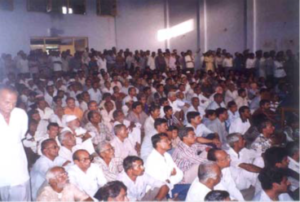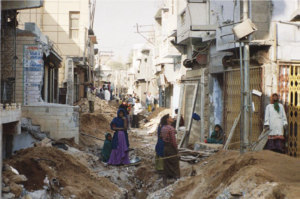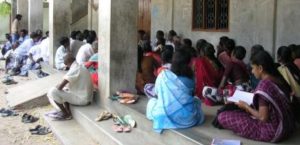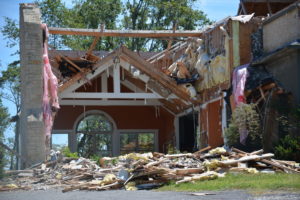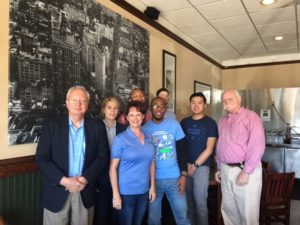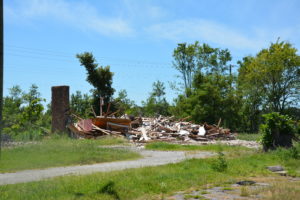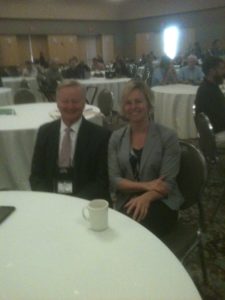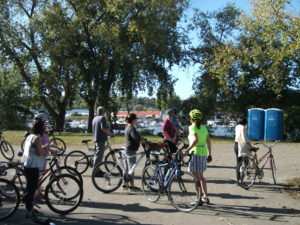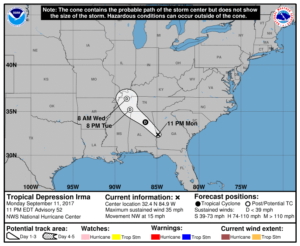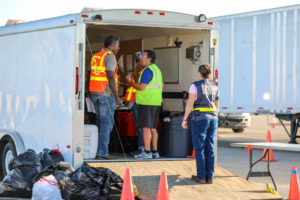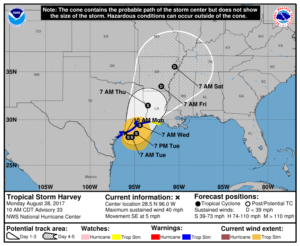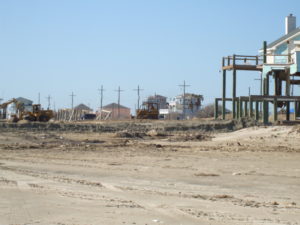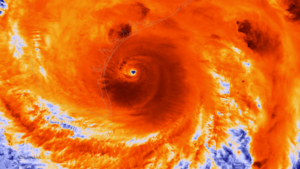 You tend to know when someone is a huge influence in his field. You can sense the gravitas when they speak, and you can find the books and articles, or major projects, that trace the impact of that person’s career. Urban planning lost such a person on January 27 when Dr. David Godschalk, 86, died in Chapel Hill, North Carolina. It seemed not that long ago when Dave was still a looming presence, contributing major ideas and shaping the thinking of his fellow professionals, but illness intervened. I recall the comment several years ago of a former co-worker at the American Planning Association, Joe MacDonald, one of Dave’s doctoral students at the University of North Carolina (UNC), who said, “Retirement for David Godschalk is a 40-hour week.” Looking at his remarkable productivity suggests that Joe was not exaggerating.
You tend to know when someone is a huge influence in his field. You can sense the gravitas when they speak, and you can find the books and articles, or major projects, that trace the impact of that person’s career. Urban planning lost such a person on January 27 when Dr. David Godschalk, 86, died in Chapel Hill, North Carolina. It seemed not that long ago when Dave was still a looming presence, contributing major ideas and shaping the thinking of his fellow professionals, but illness intervened. I recall the comment several years ago of a former co-worker at the American Planning Association, Joe MacDonald, one of Dave’s doctoral students at the University of North Carolina (UNC), who said, “Retirement for David Godschalk is a 40-hour week.” Looking at his remarkable productivity suggests that Joe was not exaggerating.
Dave Godschalk, whom I knew personally as a friend and colleague for at least the last 20 years, left what may be his most indelible impression on the subfield of hazard mitigation planning. When Dave first got involved, sometime in the 1980s, this was at best a nascent field of interest and disasters were a long-neglected focus of the urban planning profession. As a professor of urban planning at UNC for 45 years, Dave would have understood if he had heard me say, as I have on many occasions, that as a graduate student in urban planning at the University of Iowa (UI) in the early 1980s, I never heard the words “disaster,” “hazard,” or “floodplain” once despite a concentration in land use and environment. Thanks in part to the path Dave plowed for decades, I am now an adjunct assistant professor at the UI School of Urban and Regional Planning, teaching hazard mitigation and disaster recovery and using those and related words in just about every hour of classroom time.
Rather than recite his many accomplishments, which would fill pages, I will direct those interested in the full story to Dave’s recently published Searching for the Sweet Spot: A Planner’s Memoir. I confess he died before I got a chance to order it, so I am still awaiting delivery. But I read plenty of his professional work, and I would rather use this space to share my own personal memories of working with him because he was a huge influence on my own growth and rise to leadership in planning for natural hazards.
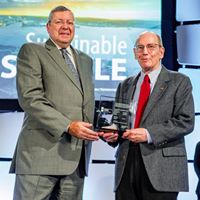
David Godschalk with APA Executive Director James Drinan (left). All photos reproduced courtesy of UNC Department of City and Regional Planning.
For one thing, he was an easy person to learn from. I do not mean that he was not intellectually demanding. If he thought your idea was off the mark, he would tell you, but he never disrespected or condescended. There are those in this world who want you to know they are the smartest person in the room. Dave simply supplied the right idea at the right time. I know because, in my capacity as manager of APA’s Hazards Planning Center, I often organized and led symposia that solicited guidance from leading thinkers on the projects we were undertaking. When invited, he always delivered. For instance, in the 2008 symposium that helped develop our project outline for Hazard Mitigation: Integrating Best Practices into Planning, an effort underwritten by the Federal Emergency Management Agency, we were all looking for tools to advance the integration of hazard mitigation priorities into the local planning process when Dave suggested developing a “safe growth audit” for communities, a set of guidelines for assessing their plans, policies, and ordinances. Facilitating the meeting, I Immediately knew a seminal concept when I heard it, and jumped on the idea, inviting Dave to help us develop the concept. He followed up with articles we published and incorporated the idea into the chapter he subsequently wrote for the Planning Advisory Service Report. His chapter became a cornerstone of what became a highly influential publication that has continued to make an impact since we released it in 2010.
Such contributions to the field were regular occurrences in Dave’s long career, which began following his service in the U.S. Navy in the 1950s and included studying planning and architecture at the University of Florida, work as a local planner in Florida, earning his Ph.D. and teaching for 45 years at UNC, and publishing 15 books and hundreds of journal articles. One of his significant contributions was his involvement in the 2004 study by the National Institute of Building Sciences (NIBS), in which he helped reshape public thinking about the value of public investments in hazard mitigation through the finding that $1 of federal money invested in such projects produced, on average, $4 in long-term savings from reduced losses from natural disasters. In a coming blog post, I will review the recent update to Hazard Mitigation Saves, which now boosts that estimate to $6 in savings for every dollar invested. There are, of course, numerous details behind these findings, but it is not hard to understand the salient influence of this pithy projection. Dave knew how to help sell an idea.
He was a major figure in hazard mitigation long before the NIBS study. His involvement merely reflected his long-standing preeminence. My bookshelf holds two items I gathered from him as I was mastering the details of hazard mitigation in the 1990s, before establishing any significant reputation of my own. One was Natural Hazard Mitigation, a 1999 Island Press book that I am still mining for material that will help with a current book project. The other, also dating to 1997, is a substantial three-ring binder, Making Mitigation Work, for which he was the principal investigator for a UNC Center for Urban and Regional Studies project supported by the National Science Foundation. Once David understood my own aspirations in this field, I could not have found a more supportive friend. He wanted to make sure that my every undertaking at APA succeeded if he could have anything to do with it.
 I am sure I was not the only person who ever got such treatment. The planning field is full of people with their stories of mentoring by David Godschalk because it may well have been the aspect of his job that he enjoyed most. He took pleasure in the growth and success of those whose careers he affected. Dave understood professional success; there were many awards bestowed on him over the years. One of the more important for any planner is being inducted into the College of Fellows of the American Institute of Certified Planners (FAICP). In 2015, as Robert Olshansky, professor of urban planning at the University of Illinois, another AICP Fellow, helped guide my nomination for this honor, we discussed the people from whom we could request letters of recommendation. Dr. Godschalk was at the top of that list. When I wrote to him with our request, I referred to him as a “dean of hazard mitigation.” In accepting the invitation, he stunned me with his humility. “If I am a dean,” he wrote, “you are the chancellor.”
I am sure I was not the only person who ever got such treatment. The planning field is full of people with their stories of mentoring by David Godschalk because it may well have been the aspect of his job that he enjoyed most. He took pleasure in the growth and success of those whose careers he affected. Dave understood professional success; there were many awards bestowed on him over the years. One of the more important for any planner is being inducted into the College of Fellows of the American Institute of Certified Planners (FAICP). In 2015, as Robert Olshansky, professor of urban planning at the University of Illinois, another AICP Fellow, helped guide my nomination for this honor, we discussed the people from whom we could request letters of recommendation. Dr. Godschalk was at the top of that list. When I wrote to him with our request, I referred to him as a “dean of hazard mitigation.” In accepting the invitation, he stunned me with his humility. “If I am a dean,” he wrote, “you are the chancellor.”
Now, there is no way that I see my career even matching his, let alone outshining it, but I also do not think he was merely engaging in fatuous praise. There was no need for it. He wanted me to know that he believed in me. And while I did not necessarily learn this lesson from Dave, he certainly confirmed it for me: As a teacher and mentor myself, I realized some time ago that there is no better way to guarantee the continuity of your own work than to demonstrate your faith in those who will follow.
Dave’s ability to inspire, to motivate, and to guide and empower will ensure that his legacy and his contributions will continue to matter for many years to come. All those people he taught and mentored will see to it.
Those desiring to sustain David’s work have been asked to contribute online to the Godschalk Fellowship Fund in Land Use and Environmental Planning.
Jim Schwab



